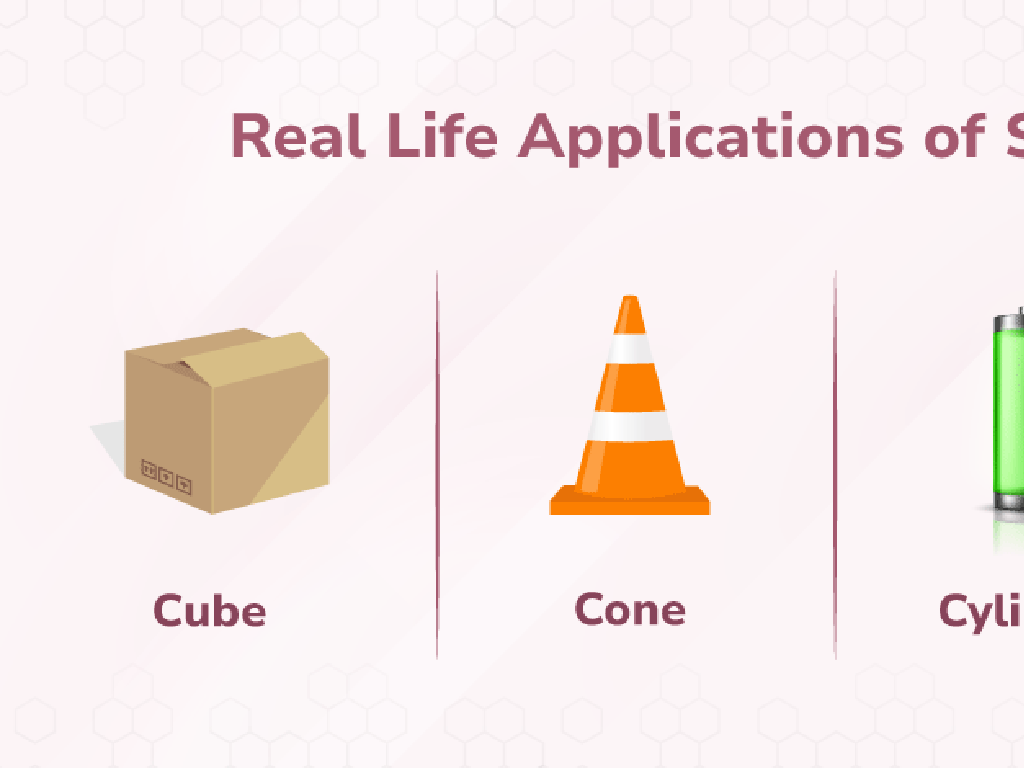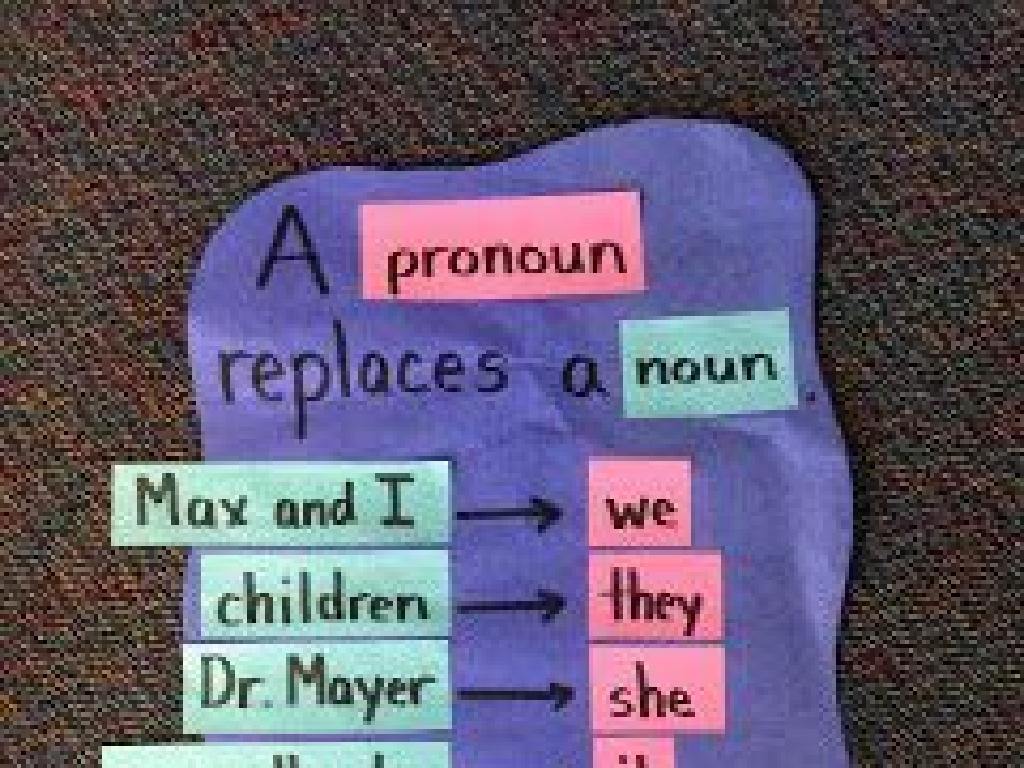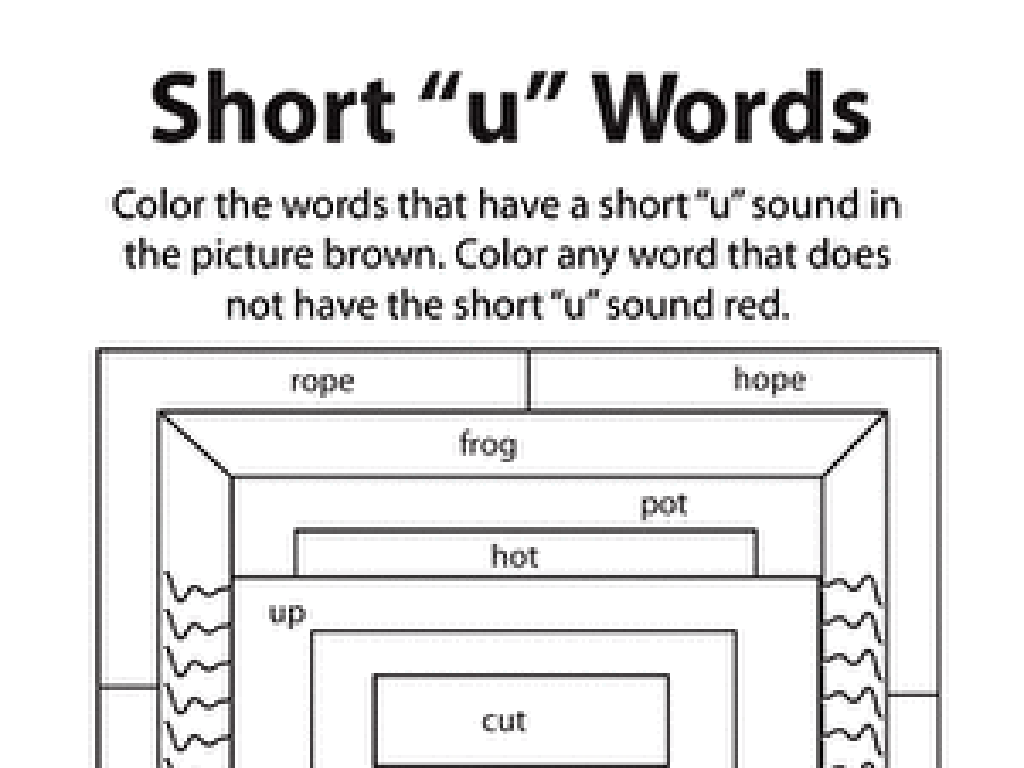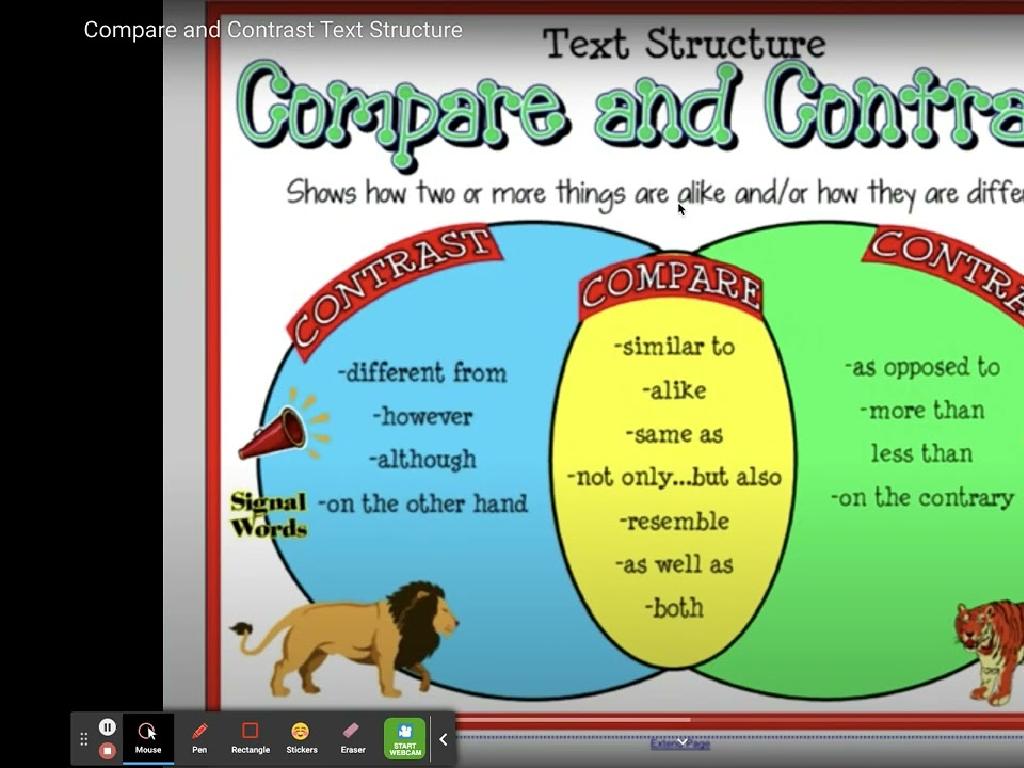Write Numbers As Tens And Ones
Subject: Math
Grade: First grade
Topic: Place Value
Please LOG IN to download the presentation. Access is available to registered users only.
View More Content
Welcome to Place Value!
– Greeting our First Graders
– Today’s lesson: Place Value
– Writing numbers as tens and ones
– Break down numbers like 23 into 2 tens and 3 ones
– Understanding with examples
– Example: 15 is 1 ten and 5 ones
|
Begin the class with a warm welcome to engage the students and create a friendly learning environment. Introduce the concept of place value, emphasizing its importance in understanding math. Explain that every digit in a number has a place and a value, using simple terms. Demonstrate with physical objects like blocks or drawings how to break down numbers into tens and ones. For instance, show that the number 23 consists of two groups of ten and three individual ones. Use relatable examples to help them visualize the concept, such as grouping items or using illustrations. Ensure that the students grasp the idea of tens and ones by asking them to practice with different numbers and providing immediate feedback.
Understanding Place Value: Tens and Ones
– What is place value?
– Place value tells the value of each number.
– Numbers have places
– Look at the ‘tens’ place and the ‘ones’ place.
– Breaking down numbers
– Learn to separate numbers into groups of ten and the rest.
– Practice with examples
– We’ll use objects like sticks or blocks to see how it works.
|
This slide introduces the concept of place value, which is fundamental in understanding how numbers are structured in our number system. Explain that each digit in a number has a different value depending on its position, or ‘place’. Use visual aids like place value charts or blocks to show that the ‘tens’ place represents groups of ten, and the ‘ones’ place represents single units. Engage the students with hands-on activities where they can group items into tens and ones to visually and physically break down numbers. This tactile approach helps solidify the concept and makes learning math fun.
Counting with Tens and Ones
– Understanding tens as groups
– Ten blocks make a ‘ten’.
– Recognizing ones as singles
– Single items are ‘ones’.
– Counting tens and ones in numbers
– How many tens in 23? Two tens and 3 ones.
– Practice with examples
– Let’s try with 15, 47, and 32.
|
This slide introduces the concept of place value, specifically focusing on tens and ones. Begin by explaining that a ‘ten’ is a group of ten items, which can be visually represented by a bundle of ten blocks or sticks. ‘Ones’ are just single items, not grouped. Use visual aids to show how numbers break down into tens and ones, such as the number 23 consisting of two tens (20) and three ones (3). Provide hands-on practice with physical manipulatives or drawings to help students visualize the concept. Encourage students to count tens and ones in various numbers and prepare simple exercises with numbers like 15 (one ten and five ones), 47 (four tens and seven ones), and 32 (three tens and two ones) for them to practice.
Understanding Tens and Ones
– The number 10: 1 ten, 0 ones
– The number 13: 1 ten, 3 ones
– Counting tens and ones in 15
– How many groups of ten? How many left over?
– Practice with different numbers
– Use objects like blocks to visualize
|
This slide introduces the concept of place value, specifically focusing on tens and ones. Start by explaining that in the number 10, there is one group of ten and zero ones left over. Similarly, in the number 13, there is one group of ten and three ones. Ask students to apply this understanding to the number 15, guiding them to see that it has one group of ten and five ones. Encourage students to use physical objects like blocks or beads to group into tens and ones for a hands-on experience. This will help solidify their understanding of place value and prepare them for more complex numbers. For the activity, students can work with various numbers to identify the tens and ones, fostering their ability to break down numbers into place value components.
Writing Numbers with Tens and Ones
– Understanding 23 as tens and ones
– 23 is 2 tens (20) and 3 ones (3)
– Breaking down 45 into tens and ones
– 45 is 4 tens (40) and 5 ones (5)
– Practice with different numbers
– Why tens and ones matter
– It helps us read and write big numbers easily
|
This slide is aimed at helping first graders understand the concept of place value, specifically tens and ones. Start by explaining that numbers are made up of tens and ones. Use visual aids like blocks or drawings to show 2 groups of ten and 3 single units for the number 23, and 4 groups of ten and 5 single units for the number 45. Encourage students to practice with different numbers, using physical objects or illustrations to represent tens and ones. Emphasize the importance of this concept as a foundation for understanding larger numbers and for future math skills like addition and subtraction. Prepare a set of numbers for students to practice with and consider pairing students up for collaborative learning.
Class Activity: Building Numbers with Blocks
– Build numbers using blocks
– Use separate tens and ones
A ‘ten’ can be a row of 10 blocks, a ‘one’ is a single block
– Count how many tens and ones
How many ‘tens’ and ‘ones’ are in your number?
– Share your number with the class
|
This activity is designed to help first graders visualize and understand the concept of place value in a hands-on way. Provide students with blocks (or other counting materials) and ask them to build numbers by grouping them into tens and ones. For example, the number 23 is made with 2 groups of ten blocks and 3 single blocks. After building their numbers, students should count and record the number of tens and ones they used, then present their findings to the class. This reinforces their understanding of place value and allows them to practice counting and public speaking skills. Possible variations of the activity could include building the same number in different ways, comparing numbers, or challenging students to find the number with the most tens.
Understanding Place Value: Tens and Ones
– Congratulations on learning tens and ones!
– Every number has tens and ones parts
– For example, 23 has 2 tens (20) and 3 ones
– Practice to master counting
– Try counting objects by grouping into tens and ones
– Keep practicing with different numbers
– Use toys or candies to make groups of ten and some extra ones
|
This slide is a conclusion to reinforce the concept of place value, specifically focusing on tens and ones. It’s important to remind the students that every number can be broken down into tens and ones, which is a fundamental concept in mathematics. Encourage them to continue practicing by grouping objects into tens and ones to visualize this concept better. Provide examples and suggest fun activities like using toys or candies to create groups of ten, which can make learning more interactive and enjoyable. Remember to praise their efforts and progress in understanding place value.






